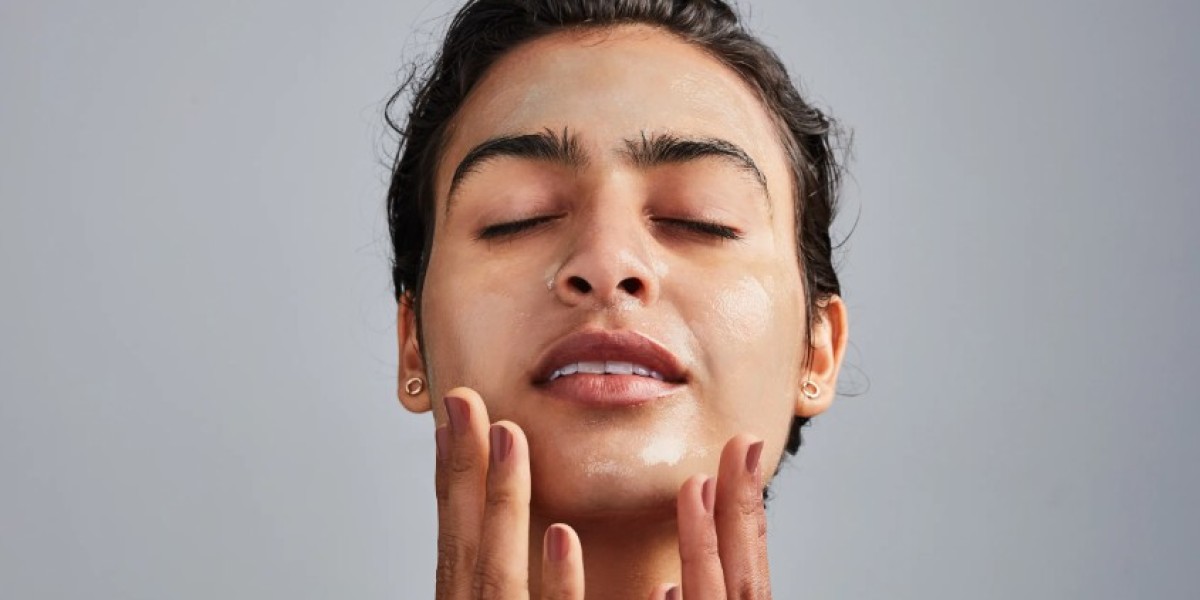Layering skincare products properly is key to making sure each one works effectively and enhances the others. When applied in the correct order, products penetrate the skin better, are more effective, and reduce the likelihood of irritation or pilling (when products roll up on your skin). Here’s a step-by-step guide on how to layer your skincare for maximum benefits.
1. Start with a Clean Canvas: Cleanser
The first step to any effective skincare routine is cleansing, which removes makeup, dirt, and excess oil from the skin. Start with a gentle, pH-balanced cleanser that suits your skin type:
- Morning Cleanse: If you’ve cleansed thoroughly at night, a gentle morning cleanse with water or a mild cleanser is often enough.
- Evening Double Cleanse: Use an oil-based cleanser first to break down makeup, sunscreen, and impurities, followed by a water-based cleanser to remove any remaining debris.
Tip: Massage the cleanser in circular motions, then rinse with lukewarm water, as hot water can strip your skin of essential oils.
2. Exfoliate (Once to Thrice a Week)
Exfoliating helps remove dead skin cells, improving texture and allowing other products to penetrate better. Use chemical exfoliants like AHAs (glycolic or lactic acid) or BHAs (salicylic acid) based on your skin type and concerns:
- AHAs: Great for dry, aging, or dull skin as they boost cell turnover.
- BHAs: Ideal for oily or acne-prone skin as they penetrate pores to remove oil.
Tip: Exfoliate at night, 1-3 times a week depending on your skin’s tolerance, and avoid other strong active ingredients on exfoliation days to prevent irritation.
3. Apply Toner
Toner balances the skin’s pH, adds a first layer of hydration, and prepares it to absorb the products that follow. Look for alcohol-free toners with hydrating or soothing ingredients like aloe vera, rose water, or hyaluronic acid.
- Oily Skin: Look for clarifying toners with gentle exfoliants or tea tree oil.
- Dry or Sensitive Skin: Opt for hydrating toners with ingredients like glycerin or chamomile.
Tip: Pat toner onto the skin with your hands or a cotton pad. Avoid scrubbing, as this can be too harsh.
4. Use an Essence (Optional)
Essences are lightweight, hydrating products that deliver an extra boost of moisture and nutrients. They work especially well for those with dry or dehydrated skin but can benefit all skin types.
- Ingredients to Look For: Hyaluronic acid, niacinamide, fermented ingredients, and botanical extracts.
Tip: Gently press the essence into your skin, allowing it to absorb fully before moving to the next step.
5. Apply Serums (Lightest to Heaviest)
Serums are concentrated treatments that target specific skin concerns like dullness, fine lines, or acne. Since serums are powerful, it’s best to start with one or two that address your primary concerns. Layer from the thinnest to the thickest serum to allow for better absorption.
- Morning Serums: Use antioxidants like vitamin C to protect against free radicals.
- Night Serums: Retinol or peptides for anti-aging, or salicylic acid if targeting acne.
Tip: If using multiple serums, apply water-based serums first, followed by oil-based ones. Let each serum absorb fully before applying the next to avoid overloading your skin.
6. Eye Cream
Eye creams target the delicate skin around your eyes, which is prone to dryness, fine lines, and puffiness. Look for hydrating, anti-aging, or brightening ingredients, depending on your needs.
- For Dark Circles: Look for ingredients like vitamin C, caffeine, or niacinamide.
- For Puffiness: Caffeine and chamomile help reduce puffiness.
- For Fine Lines: Peptides and hyaluronic acid are great for plumping and firming.
Tip: Use your ring finger to gently tap the cream into the skin to avoid tugging on this delicate area.
7. Apply Moisturizer
Moisturizer locks in hydration and all the products you’ve applied previously. Choose a moisturizer based on your skin type:
- Oily or Combination Skin: Lightweight, gel-based moisturizers that won’t clog pores.
- Dry Skin: Rich, cream-based moisturizers that deeply hydrate.
- Sensitive Skin: Fragrance-free and hypoallergenic formulas with soothing ingredients.
Tip: Apply moisturizer while your skin is still slightly damp to lock in hydration.
8. Lock in with Face Oil (Optional)
Face oils provide an additional layer of moisture and seal in all the previous steps, keeping your skin hydrated. They’re especially beneficial for dry or mature skin.
- For Dry Skin: Look for oils like marula, argan, or rosehip, which nourish and repair.
- For Oily Skin: Lightweight oils like jojoba or squalane can help balance oil production.
Tip: Warm a few drops of oil between your hands and gently press it onto your skin as the final step in your nighttime routine.
9. Sunscreen (Daytime Only)
Sunscreen is essential in any routine, protecting your skin from UV damage that causes aging, hyperpigmentation, and skin cancer. Apply a broad-spectrum SPF 30 or higher as the final step in your morning routine.
- For Sensitive Skin: Mineral sunscreens with zinc oxide or titanium dioxide.
- For Oily Skin: Lightweight, gel-based sunscreens or oil-free formulas.
Tip: Apply sunscreen generously on your face and neck and reapply every two hours if you’re in direct sunlight.
10. Layering Tips for Maximum Benefits
Layering products effectively can enhance the benefits of each step. Here are a few additional tips to make sure your skincare routine works optimally:
- Wait Between Layers: Give each product a moment to absorb before applying the next one, especially with serums and oils.
- Use the Correct Amounts: A pea-sized amount of serum or moisturizer is usually enough. Avoid overloading your skin, which can lead to pilling or clogged pores.
- Avoid Mixing Certain Ingredients: Some active ingredients, like retinol and AHAs/BHAs, can be irritating if used together. Use them on different nights or alternate days.
- Patch Test New Products: Especially for potent ingredients like retinoids or vitamin C, test a small amount on your inner arm or jawline to check for reactions.
Sample Routine for Morning and Night
Morning Routine:
- Cleanser
- Toner
- Antioxidant Serum (e.g., Vitamin C)
- Eye Cream
- Moisturizer
- Sunscreen
Night Routine:
- Cleanser (Double Cleanse if wearing makeup)
- Toner
- Hydrating or Targeted Serum (e.g., Retinol or Niacinamide)
- Eye Cream
- Moisturizer
- Face Oil (optional)
Final Thoughts
Layering skincare products correctly maximizes their effectiveness and allows you to achieve your skin goals more efficiently. Tailor your routine to fit your skin type and needs, giving each product a chance to work its magic without overwhelming your skin. With consistent application and the right layering, your skin will become healthier, more balanced, and radiant.



